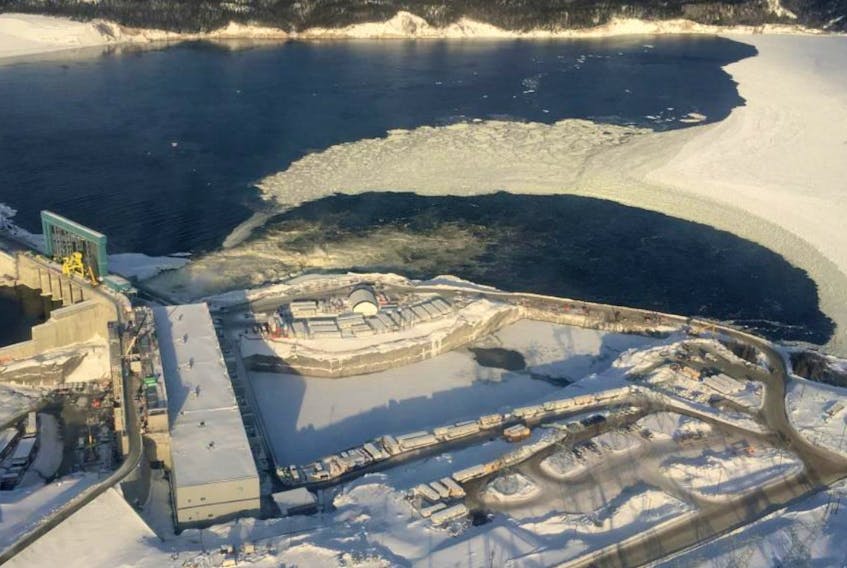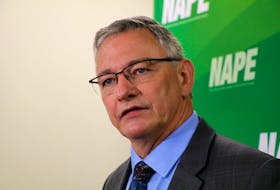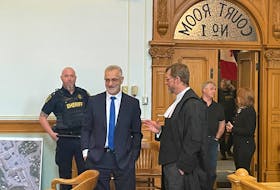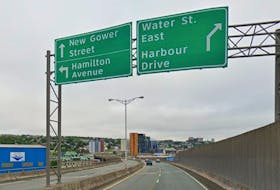HAPPY VALLEY-GOOSE BAY, NL - At the Muskrat Falls Inquiry, the issue of wetland capping in the Muskrat Falls reservoir is being addressed in final submissions, with the premier’s lawyer saying it isn’t for Dwight Ball to investigate what went wrong.
At the same time, Peter O’Flaherty, recounting the history on the issue, said briefings given to ministers of the day – Andrew Parsons and Graham Letto – as well as to the premier, in November 2018 and in January 2019, “were incorrect.”

“He wanted to do this and directed that it be done,” O’Flaherty said of Ball’s position on the proposed methylmercury mitigation measure.
O’Flaherty, who is also representing Natural Resources Minister Siobhan Coady, says it’s only for his clients to say what they know and their personal responsibilities. It’s not for them to investigate and report on anything happening within the Department of Environment.
Wetland capping in the reservoir was universally accepted as a methylmercury mitigation measure, albeit one expected to have limited effect. It was something. And it was raised by the Independent Expert Advisory Committee (IEAC), reporting in April 2018.
Permits were requested by project proponent and Crown corporation Nalcor Energy as required. But there was a failure to permit the work in time for it to be completed before the full flooding of the reservoir.
Commissioner Richard LeBlanc pushed back for more from O’Flaherty on the wetland capping. He noted attempts to get answers by the Nunatsiavut Government, by the chair of the IEAC, with no movement from government.
LeBlanc says the question is why did the meaningful follow-up take so long?
“(The premier) was alive to those issues. He just didn’t know that there was a permitting issue and he didn’t know that the department had decided not to give the permit on the basis that they were waiting on a formal decision from their minister to do the work. He wasn’t aware of it. He found out about it afterwards,” O’Flaherty said.
“Yes, it’s frustrating. Yes, it’s a difficult situation that he’s in, but he did not know about that. And there’s no evidence otherwise that he did know about it.” -O'Flaherty
In lieu of wetland capping work, the government and Nalcor Energy have arranged for $10 million each to be transferred to the Innu Nation and NunatuKavut Community Council. The Nunatsiavut Government has refused any such funding from the province, and president Johannes Lampe has condemned the province, saying his belief is wetland capping was intentionally set aside. O’Flaherty addressed that suggestion, saying there is no evidence showing that kind of intention on the part of the premier.
Meanwhile, Nalcor CEO Stan Marshall - who was on call-in for the quarterly financial update - addressed why Nalcor didn’t do more to remind government of the limited timeframe for the wetland capping.
“We were waiting for a response for what we would be required to do. When we didn’t get it right away, and recognizing the, you know, the timeline for it, we applied for an environmental approval, because it wasn’t included in the original environmental permit,” said Marshall.
“We sought that on two occasions, and never received it. So, we were really waiting for the government to respond and we never got it, as we all know now.”
Marshall says the science undertaken by Nalcor to explore the potential for methylmercury contamination did not find enough potential for methylmercury to be harmful.
“So, the whole thing became moot, really,” he said.
The Telegram has repeatedly been denied requests for an interview on the topic with former Environment minister Parsons (to November 2018). While directed to current Environment minister Lisa Dempster, she has refused to comment on events from a time of a previous minister.









